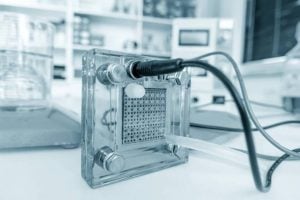
A new method of increasing the reactivity of ultrathin nanosheets, just a few atoms thick, can someday make fuel cells for hydrogen cars cheaper, a new Johns Hopkins study finds.
A report on the findings published in Science offers the promise of faster, cheaper production of electrical power using fuel cells, and also of bulk chemicals and materials such as hydrogen.
“Every material experiences surface strain due to the breakdown of the material’s crystal symmetry at the atomic level. We discovered a way to make these crystals ultrathin, thereby decreasing the distance between atoms and increasing the material’s reactivity,” says Chao Wang, an assistant professor of chemical and biomolecular engineering at Johns Hopkins University and one of the study’s corresponding authors.